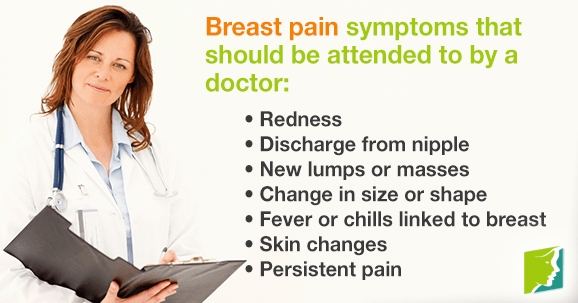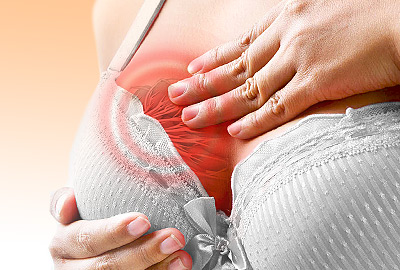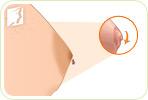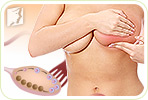Breast pain, or mastalgia, is defined by an overall feeling of discomfort, soreness, or aching in one or both breasts. The leading cause of menopausal breast pain is the fluctuation of the hormones, which can result in the burning, swelling, and sharp pain all characteristic of breast pain. Cyclical breast pain is periodic, and is the most common type of breast pain among women. While breast pain is manageable most of the time and subsides naturally, there are some uncommon causes for alarm.
When to See a Doctor
It is important to remember that breast pain is a very common symptom among women and that it is rarely a sign of breast cancer. There are times, however, when breast pain is accompanied by other symptoms that should be attended to by a doctor.
Redness. Persistent redness is abnormal and should be checked out.
Discharge from nipple. Any kind of discharge, either bloody or clear, is abnormal when you are not pregnant.
New lumps or masses. Lumps or cysts are usually benign, but you should still get them checked to make sure they are not anything more serious.
Change in size or shape. Any drastic change in breast size or shape is a red flag.
Fever or chills linked to breast pain. This could indicate a serious infection, and you should see a doctor as soon as possible.
Skin changes. Crusting, puckering, or dimpling of the breasts or nipples should be examined.
Persistent pain. If pain does not subside or is concentrated in one area of the breast, it could indicate an underlying issue.
All of these symptoms, when accompanied by breast pain, are red flags and should be treated by a doctor as soon as possible. The United States Preventive Services Task Force (USPSTF) recommends that women 50 years and older get a mammogram every two years, especially if they have relatives suffering or have suffered from breast cancer.
Other healthcare organizations recommend getting screened every year starting at the age of 35. A mammogram is an exam that uses low-dose x-rays to make a picture of the breast tissue in order to find any abnormal masses. Women under 30 should get breast exam once every other year.
Even though menopausal breast pain is normal and rarely a sign of breast cancer, early detection is key to staying healthy and for peace of mind. The primary cause of menopausal breast pain is hormone fluctuations, specifically of estrogen, progesterone, and testosterone. Cyclical breast pain is recurrent, and is the most common type of breast pain during menopause. Breast pain can typically be managed by things like regular exercise, eating healthy, and herbal remedies.
Sources
- McCoy, K. (2013). Mastalgia. Retrieved August 21, 2014, from http://www.med.nyu.edu/content?ChunkIID=223382
- National Health Service UK. (2014). Breast pain. Retrieved August 21, 2014, from http://www.nhs.uk/conditions/breastpaincyclical/pages/introduction.aspx
- University of Maryland Medical Center. (2012). Breast pain. Retrieved August 21, 2014, from http://umm.edu/health/medical/ency/articles/breast-pain




